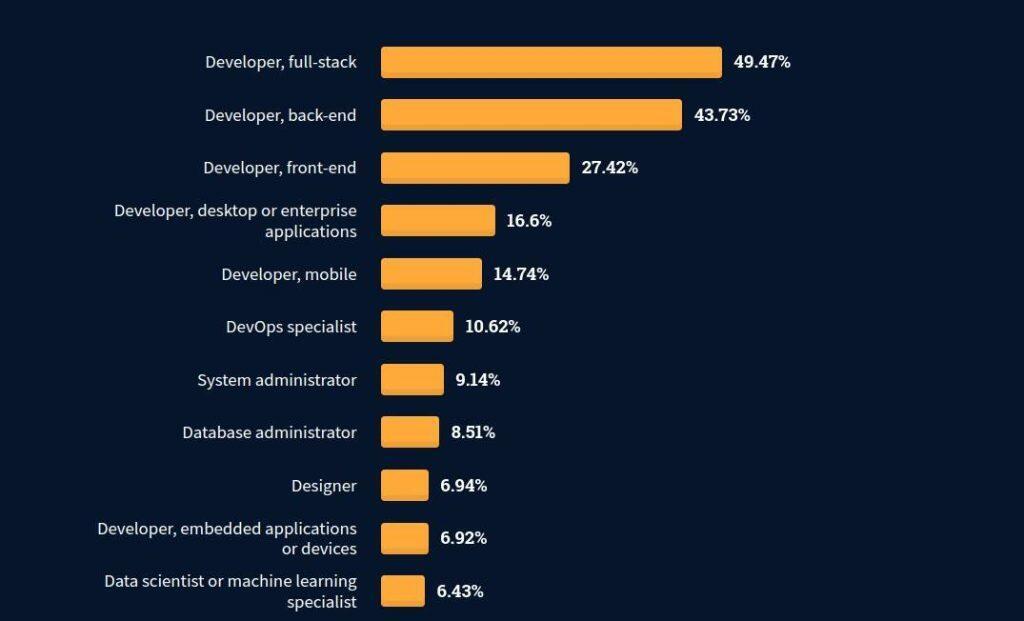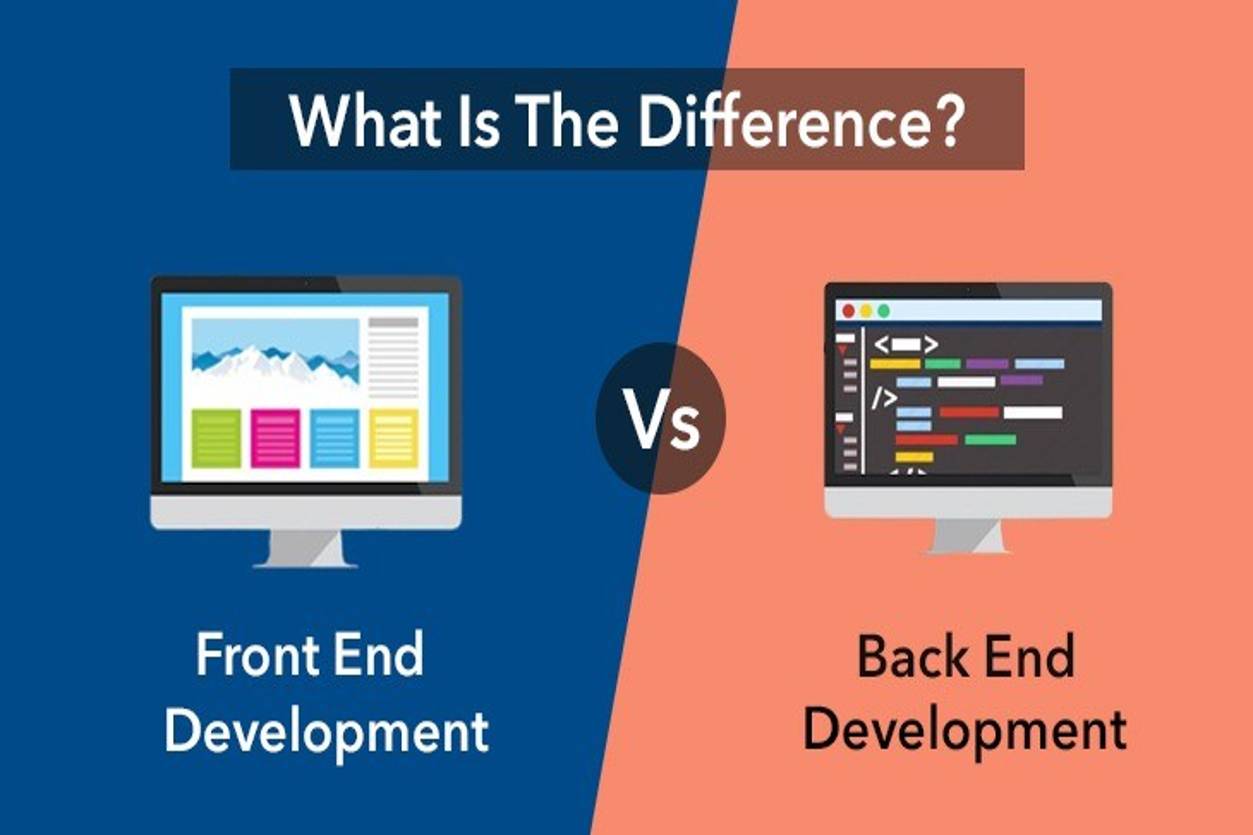In the realm of software development, you’ll frequently hear about “front-end” and “back-end”. These terms shape your role, the technologies you engage with, and your salary potential. But what’s the essence of these terms, and how do they fit into the broader web development landscape?
Site rendering, essentially, is about generating the HTML output that constructs web pages. Interestingly, site rendering can be both client-side (frontend) and server-side (backend).
Frontend Development Unpacked
Front-end web development, or client-side rendering, refers to rendering content directly on the user’s computer using the omnipresent language: JavaScript. In this approach, the remote server primarily provides the foundational web application.
In contrast, the user’s browser turns this into the final, presentable format. With JavaScript libraries like React, Angular, and Vue, this form of rendering has risen in prominence.
Are Front End Or Backend Developers More In demand?
With over 26.8 million front-end developers worldwide, and a continuous influx of newcomers, it’s evident that the demand for front-end developers remains constant and is expected to persist. Front-end development, also known as client-side development, focuses on creating web pages that users can view and interact with.
The Back-End Aspect
Historically, back-end web development dominated. Here, upon accessing a site, a server receives your content request, processes it, and sends the complete page back to your browser.
This server-side rendering implies the server is responsible for tasks like pulling data from databases and handling app-specific logic, while the browser essentially waits, later displaying the final content.
Isomorphic Rendering: The Modern Approach
Isomorphic rendering aims for flexibility. It involves initially rendering web apps on the server side and then letting client-side rendering take over. Additionally, there’s pre-rendering, which generates content at compile-time. Deciding where to render is largely influenced by the app type and target users.
Role of a Front-End Developer
Front-end web development is all about creating websites and apps that manifest on the client-side. The typical tech toolkit for front-end developers includes foundational elements like HTML, CSS, and JavaScript, supplemented by client-centric frameworks like React and Angular. While the front-end focuses on the visual, user-facing side, it still often needs back-end services and APIs.
Jobs within this realm vary. Web designers conceptualise the visuals, while UI designers focus on the look without delving deep into implementation. UX designers, however, invest time in understanding user behaviors and optimizing the experience.
A front-end developer’s core role is building sites, especially static ones. They’re expected to be proficient in HTML, CSS, and sometimes, JavaScript. This title also branches out into variations like front-end engineer or specialized roles like JavaScript developers.
Backend Developer Demystified
Back-end development focuses on server-side rendering and beyond. Back-end developers build the foundations that support front-end experiences, involving processing logic, interfacing with databases, and ensuring connectivity. These developers often employ languages like C#, Java, or Python and work with frameworks housed within tech stacks like .NET or MEAN.
Full-Stack Developers: Best of Both
Full-stack developers seamlessly blend the worlds of front-end and back-end. They’re adept at creating apps that function fluidly across both spectrums. Their knowledge spans across services, components, and APIs, making them versatile assets in web development.
Much Time Will It Take to Scale a Development Team?
Leading bespoke software development company, Sombrainc maintains an internal pool of engineers they recommend to clients upon request.
“The recruitment process for technical experts typically spans one to two months, the duration varying based on the required skills and seniority level,” a company spokesman told Tech Business News
Salary Perspectives
Backend, frontend, and full-stack developers all typically command lucrative salaries, though the specific earning potential can vary among these professions.
Typically, backend developers command an annual salary of about $115,437, while frontend developers earn approximately $101,876 per year. In contrast, full-stack developers have an average yearly income of around $101,612.
Did you know?
- Bureau of Labor Statistics stated; employment of Web developers in the US is projected to grow 27% from 2014 to 2024.
- As per the Stack overflow 2021 survey, 43.73%, 49.47%, and 27.42% of respondents were recognised as backend, full-stack, and frontend developers, respectively.

Which is the Best Front-end framework 2023?
Few top tools are generally used by Front-end Developers that are:
- React: It is an open-source JavaScript library for developing user interfaces. Facebook and a developers community manage this framework.
- Angular: It is a TypeScript-based open-source web app framework maintained by the Angular Team at Google and the developers community. You can Hire Angular developers on a monthly, hourly, or full-time basis from us.
- Vuejs: It is an open-source ViewModel JavaScript framework used for building user interfaces and single-page applications.
- jQuery: It is an open-source JavaScript library developed to simplify HTML DOM tree traversal. It also handles CSS animation and Ajax.
- Ember.js: It is an open-source JavaScript web framework. It allows developers to develop scalable single-page web apps.
- Ember.js: It is an open-source JavaScript web framework. It allows developers to develop scalable single-page web apps.
- Backbone.js: It is a JavaScript library based on the model–view–presenter app design model.
- Semantic-UI: It is one of the most advanced frontend development frameworks, powered by LESS and jQuery
- Svelte: It is a free and open-source JavaScript framework. This framework does not include app framework references.
React, Vue.js and Angular are the top three Front-end Frameworks. Frontend developers highly recommend these frameworks.
What are the best Back-end frameworks?
- Laravel: It is an open-source PHP web framework developed by Taylor Otwell and is mainly created to develop web applications.
- CakePHP: It is a famous web framework that follows the model–view–controller approach and is written in PHP.
- Django: It is a Python-based open-source, free web framework that follows a model-template-view architectural pattern.
- Flask: It is a free micro web framework written in Python. This framework does not require particular tools or libraries to develop apps.
- Phoenix: It is a web development framework; it uses a server-side model-view-controller pattern and is based on Plug library.
- Express: is a free and open-source web application framework for Node.js and is designed for developing web apps and APIs.
- Spring Boot: It is an open-source Java-based framework mainly used to build a micro Service. Pivotal Team created this framework
- Ruby on Rails: It is a server-side web app framework written in Ruby. It offers default structures for a database, a web service, and a web page.
Extended Summary
The roles of Frontend and Backend development are indispensable in website development, making it challenging to declare a clear winner in the ongoing Frontend vs. Backend Developer debate.
In the contemporary landscape, many startups, SMEs, and large enterprises opt to Hire Developers for website or application development. However, often there’s a lack of clarity regarding the distinctions and applications of Frontend and Backend development.
To create a top-notch website that aligns with your business objectives, it’s imperative to understand these differences.
To craft an appealing website interface, it’s essential to Hire Front-end Developers, while for building server-side functionalities, you’ll need to Hire Back-end Developers. This knowledge empowers you to make informed choices and ultimately achieve your desired online presence.
By now, the distinction between front-end and back-end should be lucid. The front-end largely concerns browsers, while back-end orbits around servers or the cloud.
Your inclinations – be it towards design, algorithmic problem-solving, or a mix of both – will guide your journey, be it as a front-end, back-end, or full-stack developer. The good news? The software development industry is booming, offering ample opportunities for enthusiasts.







